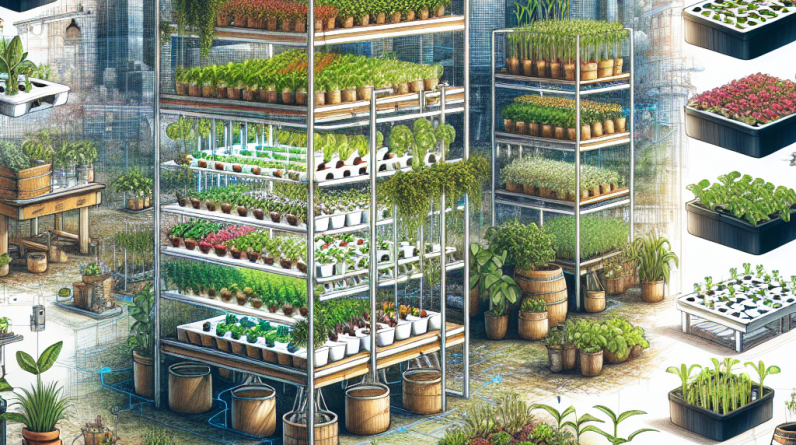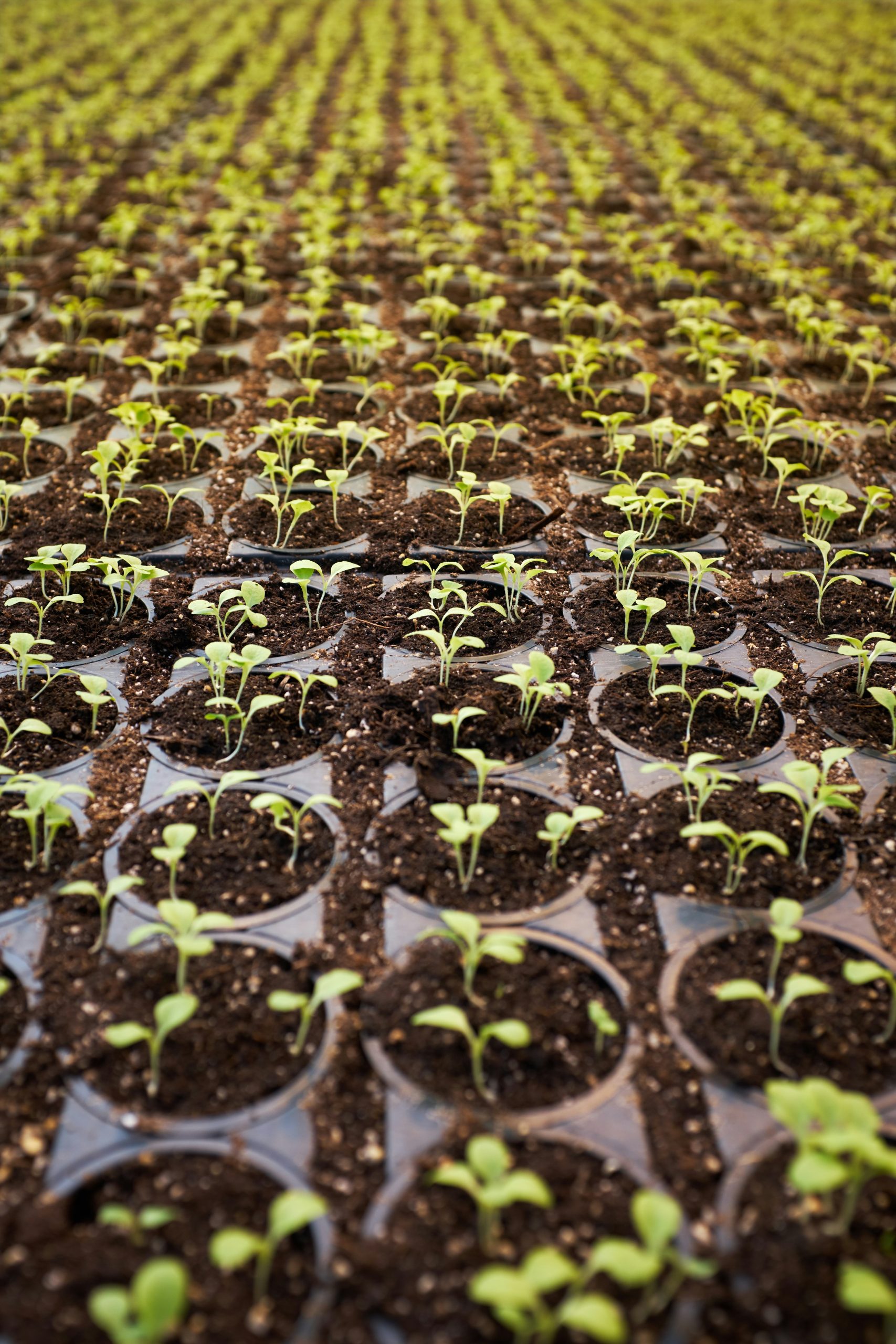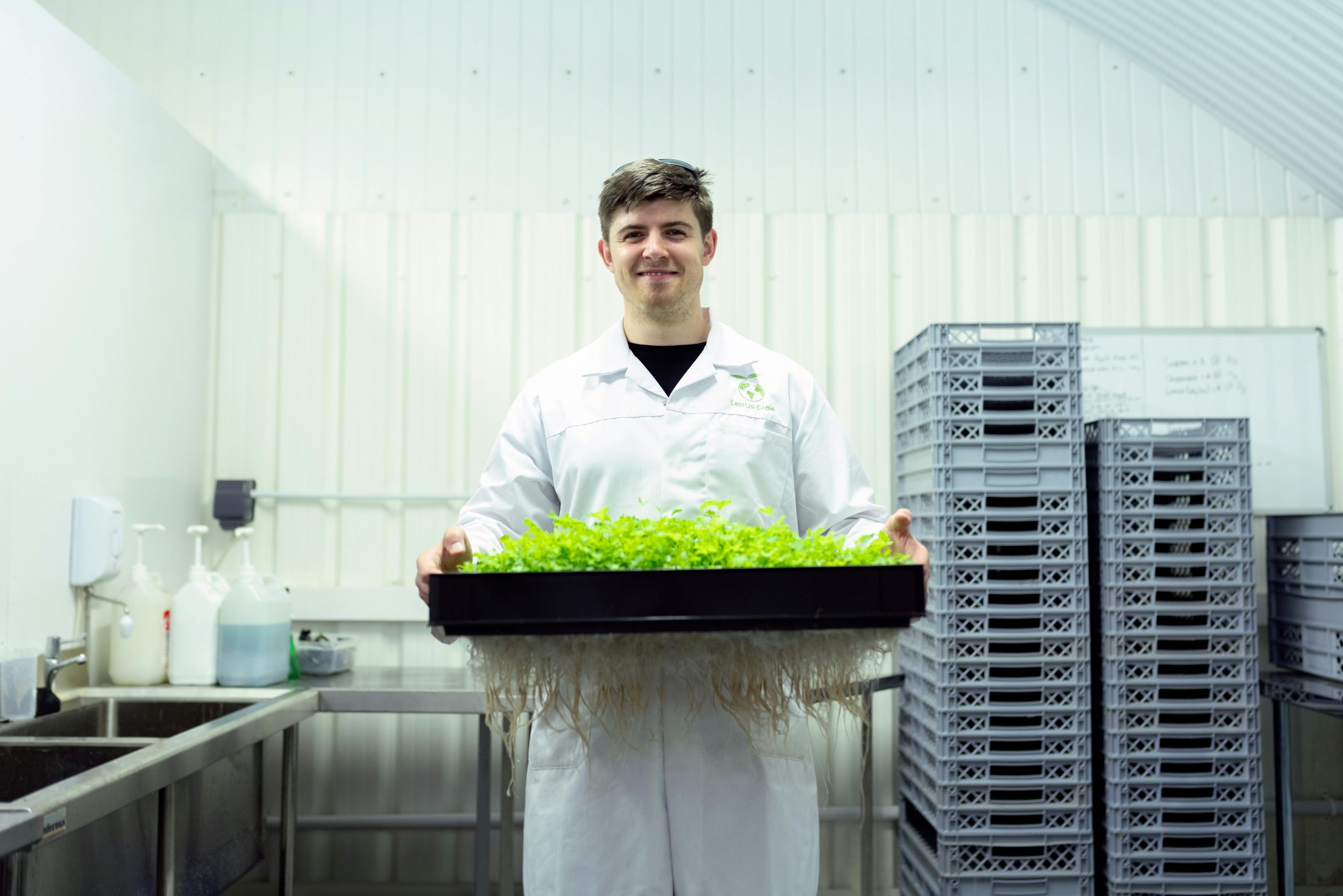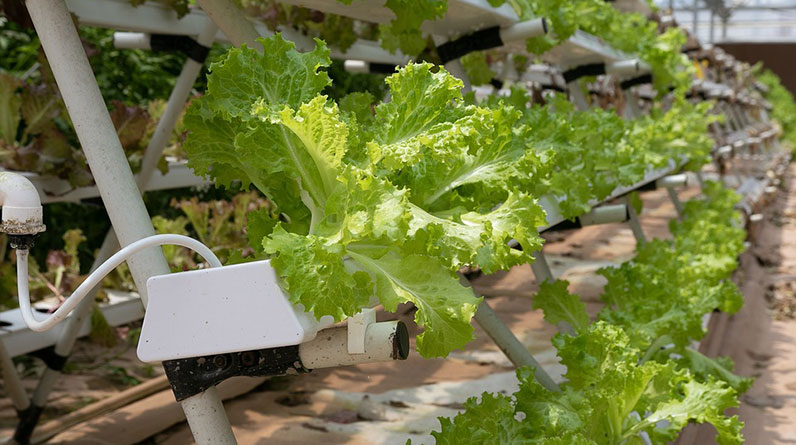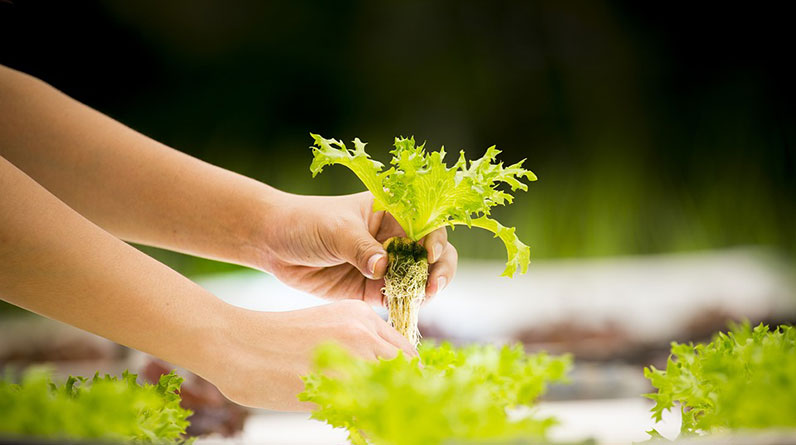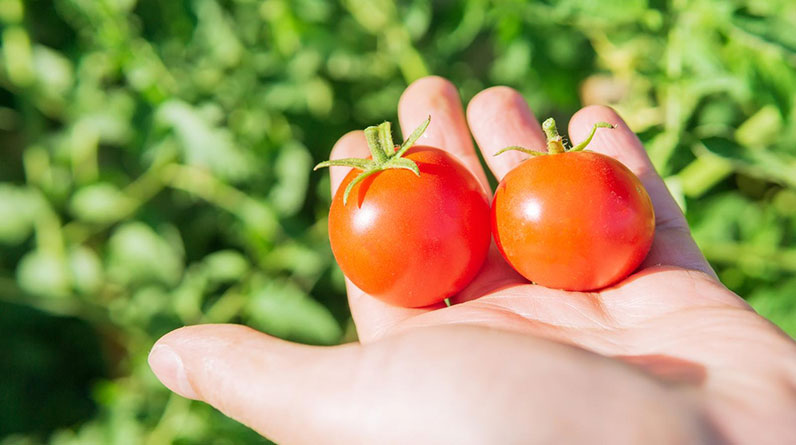
- 1. Understanding the Basics of Nutrient Film Technique Hydroponics
- 2. Designing an Efficient NT Hydroponic System
- 3. Optimizing Nutrient Delivery and Water Flow
- 4. Managing pH and Nutrient Concentrations Effectively
- 5. Monitoring and Controlling Environmental Conditions
- 6. Troubleshooting Common Challenges
- 7. Future Trends and Innovations in Nutrient Film Technique Hydroponics
1. Understanding the Basics of Nutrient Film Technique Hydroponics
What is Nutrient Film Technique Hydroponics?
The nutrient film technique (NFT) hydroponics is a highly popular method for growing plants without soil in 2025. It involves a continuous flow of nutrient-rich water that circulates over the roots of plants embedded in a slight incline. This thin film of water provides essential nutrients efficiently while allowing roots access to ample oxygen. Many urban farmers and commercial growers prefer NFT for its simplicity and scalability.
In nutrient film technique hydroponics, the system typically uses channels or troughs where the plants sit in small holes. The minimal water movement not only reduces water usageâmaking it environmentally friendlyâbut also ensures rapid nutrient absorption. Many successful greenhouses in 2025 have adopted NFT to maximize productivity with minimal resource input.
Understanding how this system fundamentally works is key to optimizing plant growth and preventing issues like root rot or insufficient oxygenation. Progressively, as technology improves, so does the efficiency of nutrient film technique hydroponics, making it a vital part of sustainable agriculture trends in 2025.
Advantages of Using Nutrient Film Technique
One of the main benefits of nutrient film technique hydroponics is its low cost and straightforward setup. Without the need for complex pumps or media, beginners find it easier to start their hydroponic journey. Moreover, NFT provides fast plant growth ratesâoften 20-30% quicker than soil-based cultivationâthanks to direct, consistent nutrient delivery.
This method also promotes excellent oxygen access to roots, reducing the risk of common diseases like root rot, especially when systems are properly maintained. Additionally, nutrient film technique hydroponics is adaptable for various crops, including leafy greens, herbs, strawberries, and even small fruiting plants, which makes it versatile for farmers in 2025.
By applying precise nutrient control, growers can tailor feeding schedules to specific plants’ needs, resulting in higher yields and quality produce. As the industry advances, increasingly smart monitoring tools now integrate seamlessly into NFT setups, ensuring optimal conditions at all times.
2. Designing an Efficient Nutrient Film Technique Hydroponic System
Choosing the Right Layout and Materials
Designing a successful nutrient film technique hydroponics system begins with selecting appropriate materials. PVC or food-grade plastic channels are popular choices for their durability, affordability, and chemical resistance. The system needs a slight inclineâtypically 1-3%âto ensure a steady water flow without causing plants to submerge or dry out.
Layout options vary from simple linear channels to multi-tiered systems that maximize space, especially in urban environments. When designing your NFT system in 2025, consider factors like accessibility for maintenance, lighting exposure, and waste management.
Moreover, integrating modular components allows for scalability and easy upgrades. For instance, using pre-made troughs or DIY custom channels can significantly reduce costs while maintaining efficiency.
Calculating Flow Rate and Channel Size
The flow rate of nutrient solution is critical for healthy roots in an NFT system. A common recommendation for 2025 growers is a flow of approximately 1-3 liters per minute per channel, depending on plant type and environmental factors. Ensuring the water adequately wets the roots without pooling is essential.
Channel width and depth should be selected based on crop size; leafy greens thrive in narrower channels (around 5-10 cm wide), while larger plants need broader, deeper channels. Proper calculations help prevent water stagnation and promote uniform nutrient distribution.
Using flow regulators and timers can automate nutrient delivery, minimizing manual adjustments and optimizing plant growth cycles. Incorporating smart sensors and IoT technology makes managing flow rate more precise than ever in 2025.
Implementing a Reliable Support Infrastructure
Beyond the channels themselves, a robust support infrastructure includes reliable pumps, reservoirs, and filtration systems to prevent clogging and contamination. In 2025, automated nutrient dosing systems are commonplace, making maintenance more straightforward.
Additionally, ensuring that your system has enough capacity for your crop demands prevents issues related to nutrient deficiencies or overflows. Properly designed infrastructure also facilitates regular cleaning, which is key to preventing algae buildup and pathogens.
Investing in high-quality components and planning for future expansion can save money long-term, making your NFT hydroponic system both efficient and sustainable.
3. Optimizing Nutrient Delivery and Water Flow
Maintaining Consistent Nutrient Concentration
Ensuring that plants receive a balanced and consistent nutrient supply is vital. In 2025, advanced nutrient monitors and automated dosing systems are standard in successful nutrient film technique hydroponics setups. These tools help maintain optimal electrical conductivity (EC) and pH levels, which are critical for plant health.
Regularly testing nutrient solution parameters allows for quick adjustments, avoiding deficiencies or toxicities. For instance, leafy greens prefer a slightly acidic pH around 5.8-6.2, which facilitates nutrient uptake efficiently in NFT systems.
Implementing real-time monitoring reduces guesswork, saving time and reducing waste, which is essential as market standards for quality and efficiency continue to rise in 2025.
Ensuring Adequate Water Flow
Flow consistency is the backbone of nutrient film technique hydroponics. Too slow, and roots may dry out; too fast, and roots could be submerged or damaged. Optimal flow rates prevent stagnation and promote oxygen exchange.
Adjusting pump speeds based on plant growth stages and environmental conditions helps fine-tune water circulation. Using variable frequency drives (VFDs) and smart controllers ensures a responsive system adaptable to daily variations.
For large-scale operations, incorporating flow sensors linked with automation software enhances overall system robustness, ensuring each plant receives uniform treatment at all times.
Managing Nutrient Recycling
In 2025, sustainability is a top priority, leading many growers to incorporate nutrient recycling within NFT systems. Recirculating nutrient solutions reduces waste and lowers operational costs. Proper filtration and periodic nutrient solution refreshes maintain nutrient density without accumulation of salts or pathogens.
Some advanced systems include ultraviolet sterilization and biofilters to keep the water clean. Regular monitoring ensures that nutrient levels stay within optimal ranges, promoting healthy root development.
Adopting these practices not only benefits your plants but also aligns with wider environmental goals, making nutrient film technique hydroponics a more sustainable choice in 2025.
4. Managing pH and Nutrient Concentrations Effectively
Monitoring and Adjusting pH Levels
Maintaining the right pH in your nutrient solution is crucial, especially in nutrient film technique hydroponics. In 2025, digital pH meters and automatic adjustment systems make this task straightforward. The ideal pH for most crops grown in NFT is around 5.8-6.2, which maximizes nutrient availability.
Regular pH testingâpreferably dailyâhelps catch fluctuations early. Sudden drops or rises often indicate contamination, imbalance, or equipment issues. Automated systems that add pH up or down solutions can keep your system balanced with minimal effort.
Consistent pH control improves crop yields, reduces nutrient lockout, and encourages healthy root systems, making your NFT setup more reliable and efficient.
Controlling Nutrient Concentration (EC)
Electrical conductivity (EC) measurements inform growers about the concentration of dissolved salts and nutrients in the solution. In nutrient film technique hydroponics, maintaining an EC of about 1.5-2.0 mS/cm for leafy greens is typical in 2025, but it varies with crop type.
Over-concentrated solutions can cause nutrient burn, while too dilute solutions limit growth. Automated EC sensors integrated with nutrients dosing systems help maintain precise levels, reducing human error.
Adjusting nutrient concentrations according to plant growth stageâhigher during rapid vegetative growth and lower during floweringâmaximizes yields and quality in your hydroponic operation.
Implementing Nutrient Testing Procedures
Regular testing using portable meters or lab analysis is essential for optimizing nutrient film technique hydroponics. In 2025, many commercial operations utilize digital sensors with data logging capabilities for continuous monitoring.
Testing should be scheduled at least daily, especially during periods of environmental change or system adjustments. Keeping detailed records helps identify trends and prevent recurring issues.
By combining precise testing with automated adjustments, growers can ensure consistent nutritional support, ultimately leading to healthier plants and higher yields.
5. Monitoring and Controlling Environmental Conditions
Light Optimization
Lighting plays a pivotal role in nutrient film technique hydroponics success. In 2025, LED grow lights with adjustable spectrum and intensity are standard. Proper light management promotes photosynthesis, boosting growth rates and crop quality.
Positioning lights with respect to plant height and seasonality minimizes energy waste. Automated lighting controls synchronize photoperiods with plant needs, reducing stress and encouraging uniform development.
Monitoring light levels with PAR meters ensures your NFT system receives optimal illumination, crucial for maximizing yield potential in your hydroponic setup.
Temperature and Humidity Control
Maintaining optimal temperature (around 20-24°C) and humidity (50-70%) in your growing environment enhances nutrient uptake and plant health. Modern climate control systems in 2025 use smart sensors and automated ventilation, heating, and cooling units.
Environmental fluctuations can cause stress and reduce productivity. Continuous monitoring allows immediate adjustments, reducing the risk of mold, pests, or disease outbreaks.
In NFT systems, consistent environmental control is even more critical because of the systemâs sensitivity. Smart automation makes this easier and more reliable than ever.
Air Circulation and Ventilation
Proper airflow is vital in nutrient film technique hydroponics, ensuring roots stay oxygenated and preventing fungal issues. Ventilation systems with adjustable fans, coupled with CO2 monitoring, optimize plant respiration.
In 2025, integrating these systems with smart controllers ensures responsive airflow based on real-time environmental data. Properly managed circulation enhances overall system health and productivity.
Consistent environmental management creates the ideal microclimate for your NFT crops, improving growth rates and fruiting quality.
6. Troubleshooting Common Challenges
Dealing with Root Rot and Disease
Root diseases, particularly root rot caused by Pythium, are common issues in nutrient film technique hydroponics. Maintaining proper water flow, oxygen levels, and hygiene controls your risk. Regular system cleaning and monitoring water nutrient levels prevent bacterial buildup.
In 2025, UV sterilization and biological controls are increasingly used to mitigate disease outbreaks. Early detection through visual inspection and sensor data is vital for quick intervention.
Implementing proactive measures reduces crop loss and keeps your system running smoothly.
Addressing Water Flow and Nutrient Imbalance
Uneven water flow or nutrient deficiencies often result from pump failures or clogged channels. Regular inspection and maintenance are essential to prevent downtime. Using flow sensors with alarm systems can alert you to issues before they impact crops.
In nutrient imbalance cases, re-testing water parameters and adjusting dosing accordingly restore optimal conditions. Automated systems help manage this process in real-time, especially in larger setups.
Consistent troubleshooting improves overall yield, crop quality, and operational efficiency.
Managing Pest and Pest-Related Damage
Pests such as aphids and whiteflies can infiltrate NFT systems if not properly managed. Maintaining cleanliness, using physical barriers, and integrating biological controls keep pest populations low.
In 2025, integrated pest management (IPM) strategies that combine monitoring, biological controls, and minimal chemical use are essential for organic and conventional growers alike.
Early detection and intervention minimize crop damage and prevent outbreaks from disrupting your hydroponic cycle.
7. Future Trends and Innovations in Nutrient Film Technique Hydroponics
Smart Technology Integration
By 2025, the integration of IoT, AI, and automation has revolutionized nutrient film technique hydroponics. Sensors constantly monitor environmental parameters, nutrient levels, and flow rates, adjusting systems in real-time for optimal crop growth.
This technological leap simplifies system management, reduces labor costs, and enhances crop yields. Remote monitoring apps allow growers to oversee their NFT systems from anywhere, increasing flexibility and responsiveness.
Embracing these innovations ensures your hydroponic operation remains competitive and sustainable.
Eco-Friendly and Sustainable Practices
Active research in 2025 promotes eco-friendly NFT practices, such as using biodegradable materials, rainwater harvesting, and renewable energy sources. These strategies decrease the environmental footprint of hydroponic farming.
Additionally, advances in nutrient recycling and closed-loop systems help conserve resources, aligning with global sustainability goals.
Adapting to these trends not only benefits the environment but also enhances your farm’s reputation and profitability.
Crop Diversification and Specialty Production
In 2025, growers are experimenting with a broader range of cropsâexcelling in herbs, microgreens, and even vine cropsâthanks to refined NFT systems. Enhanced control and precision enable higher-quality products and diverse offerings.
Innovative lighting, nutrient formulations, and environmental controls are making it feasible to grow specialty crops sustainably in limited space.
Staying ahead of these trends can position your operation as a leader in cutting-edge hydroponic farming.
Frequently Asked Questions
What is nutrient film technique hydroponics?
Nutrient film technique hydroponics is a method where a thin layer of nutrient-rich water continuously flows over the roots of plants in channels, providing efficient nutrients and oxygen.
How do I maintain optimal conditions in my NFT system?
Regularly monitor and adjust pH, EC, water flow, and environmental factors like temperature and light. Use automation and sensors for consistent control in 2025.
What are common issues in nutrient film technique hydroponics?
Common issues include root rot, water stagnation, pest infestations, and nutrient deficiencies. Prevent them through proper cleaning, monitoring, and pest management strategies.
Can I grow various crops using NFT hydroponics?
Yes, in 2025, NFT systems are versatile enough to support leafy greens, herbs, strawberries, and even small fruits, depending on the system design and management.
What are the benefits of using nutrient film technique hydroponics?
NFT offers low water and nutrient waste, rapid growth, better oxygen access, scalability, and ease of management, making it a popular choice for modern growers.
Conclusion
Mastering the art of nutrient film technique hydroponics is essential for growers aiming for high yields, sustainability, and efficiency in 2025. By understanding system design, optimizing nutrient delivery, controlling environmental factors, and embracing future innovations, you can achieve remarkable results. The exact keyword phrase nutrient film technique hydroponics remains central to successful hydroponic farming, offering a sustainable and scalable solution for modern agriculture. Whether you are a hobbyist or a commercial grower, implementing these 7 strategies will elevate your hydroponic endeavors to new heights in


